Signal at Sand Point Way and 52nd Avenue NE
Last June, Children's Hospital completed the first phase of the Livable Streets Initiative, a traffic mitigation plan, which is part of the Major Institutions Master Plan, adopted by the City Council in 2010, which details the development of the Hospital's expansion plans in collaboration with the Standing Advisory Committee (SAC) which has met monthly over the last 8 years and continues to meet yearly.
The Initiative sets forth to improve neighborhood transportation and make streets safer as the hospital continues to grow with pedestrian, bicycle, and other transportation projects in Northeast Seattle over a 20-year time span.
The goal of the initiative is to "create projects to improve safety, health, flow of transportation and livability around the hospital," their website says.
One improvement completed in was a new Sand Point Way crossing at 52nd Avenue NE. The signal is project number 7 of the Livable Street Initiative.
Children's Director of Transportation and Sustainability at the time said that the project "was identified from community input in 2010 and paid for with a combination of Seattle Children’s Livable Streets funds and Neighborhood Matching Grant Funds.
.
The Hospital has committed to pay $4 million dollars in improvements.
The Laurelhurst Community Club commented that the City also contributes money so that many more projects can get done.
"The city's money is used as leverage. for children's dollars to go much further," LCC said.
Children's Hospital recently published this information:

Livable Streets Complete Phase 1 Projects
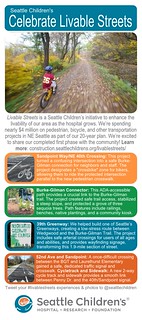
To date, Children’s Livable Streets completed investments total approximately $1.5 million and include a remaining balance of approximately $ 2.5 million to be invested during future phases of growth.
Here are the completed projects:
Sand Point Way/NE 40th Crossing
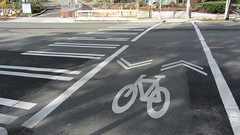
Completed January 2013
This project turned a confusing intersection into a safe Burke-Gilman Trail connection for neighbors and staff. In partnership with SDOT, the traffic signal and redesigned intersection at 40th Ave. NE have made it easier to cross four lanes of traffic at this busy spot. The new intersection features many elements that maximize safety and improve operations and designates a crossbike zone for bikers, allowing them to ride the protected intersection parallel to the new pedestrian crosswalk.
Burke-Gilman Trail Connector
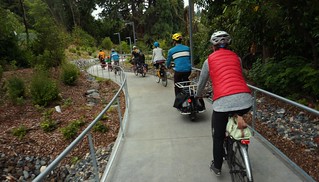
Completed April 2014
This ADA-accessible path provides a crucial link to the Burke-Gilman trail. Seattle Children’s worked with neighbors on designs for this project to create safe trail access, while stabilizing a steep slope and protecting a grove of three sequoia trees. The path features include railings, benches, native plantings and a community information kiosk.
39th Ave Greenway
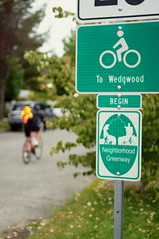
Completed Fall 2012
Greenways are residential streets where traffic moves at slower speeds and people feel safer and more comfortable walking and biking.We partnered with the Seattle Department of Transportation and Seattle Neighborhood Greenways to build one of Seattle’s first Greenways, creating a low-stress route between Wedgwood and the Burke-Gilman Trail. The project includes safe arterial crossings for users of all ages and abilities, and provides wayfinding signage, transforming this 1.9-mile section of street between NE 52nd St. and NE 80th St.
Northeast 52nd Street and Sand Point Way Northeast
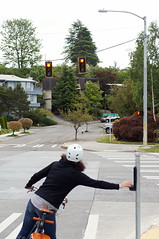
Completed March 2014
Sand Point Way NE creates a barrier and safety issue in this part of the neighborhood. A once-difficult crossing between the Burke-Gilman Trail and Laurelhurst Elementary, NE 52nd Street gained a safe, family friendly, dedicated traffic signal and crosswalk.Previously, people wishing to access parks, schools, and shopping on the other side of the arterial had to cross four lanes of high-speed traffic with no signal or other crossing treatment.
Seattle Children’s Cycle Track and Sidewalk
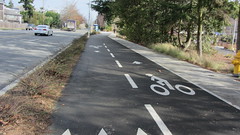
Completed February 2013
A new cycle path and sidewalk along the Seattle Children’s frontage provides a smooth link between Penny Drive and the newly improved crossing and signal at NE 40th and Sand Point Way. The concrete sidewalk is five feet wide. The asphalt bike path is 10 feet wide (five in each direction). The project includes a large bus waiting zone at the midway point.
.jpg)

No comments:
Post a Comment